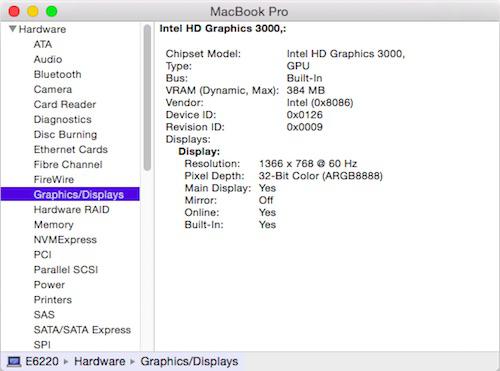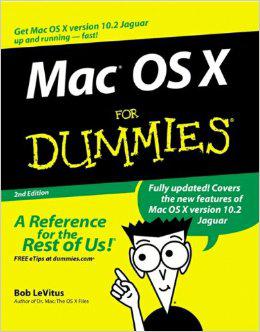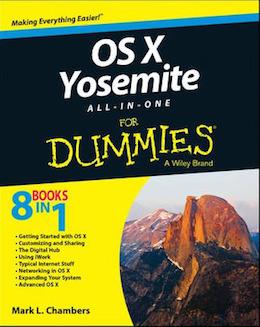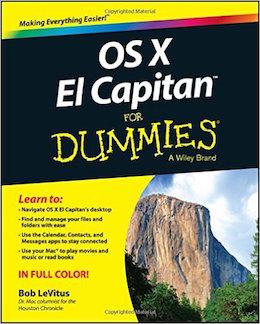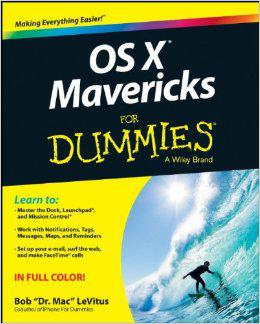-
Posts
10067 -
Joined
-
Last visited
-
Days Won
569
Content Type
Profiles
Articles, News and Tips
Forums
Everything posted by Hervé
-
Ok, Intel i7-720QM is a quad-core Clarksfield CPU with DMI interface (or QPI) at 2.5GT/s. I guess that's what you're talking about when you mention FSB 2500MHz. DMI (QPI) was an evolution of the FSB and the latter no longer applies to Core generation CPUs. FSB applied to older CPU generation like CoreDuo, Core2Duo, Core2Quad, etc. The i7-720QM CPU has a nominal speed of 1.6GHz with Turbo boost to 1.73GHz (3 or 4 cores), 2.4GHz (2cores) or 2.8GHz (1 core). What I'm talking about by CPU bus speed is the actual base clock which, combined with CPU clock multiplier, provides the overall CPU speed/frequency. For instance, SandyBridge/IvyBridge/Haswell CPUs operate at frequency=multiplier x 100MHz (and all have a DMI of 5GT/s). This is what you typically see in HWMonitor app: In the case of the i7-720QM, LFM = 933MHz (the lowest frequency it runs at) and nominal multiplier = 12. As such, this CPU operates a 133MHz bus speed/base clock (1.6GHz / 12 = 133MHz). In HWMonitor, you'd see a multiplier of x7 at LFM speed, x12 at nominal speed, x13 at 3/4core Turbo boost (1.73GHz), x18 at 2cores Turbo boost (2.4GHz), x21 at 1core Turbo boost (2.8GHz). NB: I've read some people reporting inability to reach x21 multiplier with VT (Virtualisation Technology) enabled in BIOS... To have the expected "proper" CPU speeds reported, you'll need to configure Clover with a CPU bus speed of 133000 kHz. You should then see a CPU reported at 1.60GHz in "About this Mac" rather than 1.58GHz and same thing in HWMonitor.
-
Setting bus speed to 625000kHz sounds wrong to me. Arrandale (or 1st gen "i" core) CPUs typical use a 100MHz or 133MHz bus speed ('can't remember which). Which specific CPU model do you have?
-
In the case of Optimus, HDMI and DP may be wired to the nVidia GPU then.
-
Did you remove NullCPUPM and enable P States + C states in the Clover config? Regarding CPU speed, it's perfectly Ok to see 1.58GHz for a 1.6GHz nominal speed. Nothing to worry about, there's no bug here. Clover allows you to rectify this by specifying a nominal FSB bus speed in the CPU config menu/section. Lookup your exact CPU model and you'll find out the associated bus speed. Then, specify that (in KHz) in the Clover config. You do not need to modify AGPM kext in /S/L/E, the FakeSMC kext already contains the necessary patch.
-
Try this. FakeSMC_package_E6510_NVS-3100M.zip
-
Your SysProfiler shows that you're using MBP6,2 SMBIOS (which is Ok) and SMC version 1.58f17 (also Ok). I'm pretty sure your FakeSMC is therefore Ok but I'll check it out. I'll also inject an AGPM section to your FakeSMC to target your NVS 3100M GPU (ven/dev id 10de/0a6c). I'll reuse the same parameters as I did for nVidia NVS 135M of the D630/D830 series or NVS 160M of E6400/6500 series. It may turn out not fully optimum and may require further tuning but will nevertheless hopefully provide you with proper GPU throttling. Full explanations are available here. Edit: on checking your provided FakeSMC, no it's not tuned at all!
-
No sound but you can start and shutdown your laptop now? I'd call this progress. Audio we can fix easily in due course. It's totally secondary. Thanks for the IOReg. I can see your nVidia GPU as device VID under device PEG3@3. You probably already have full graphics acceleration for your NVS 3100M (i.e. it works OOB), but I can patch it for cosmetic reasons (like display "nVidia NVS Quadro 3100M" instead of "Dell NVS 3100M) and make the LCD screen internal. Your built-in screen appears as AppleDisplay, not AppleBacklightDisplay so I guess About thisMac->Displays tab shows an external screen picture instead of a laptop built-in LCD. Can you confirm? if you have an HDMI output, it should work OOB (2nd nVidia output port shows HDMI connector type). I'd be interested to hear if you see proper GPU throttling in HWMonitor app, especially after sleep. If you do not, AGPM tuning would probably fix that and provide you with much better GPU performance, better T° and better battery savings. I see your Broadcom wireless card as device PXSX under RP02@1C,1. Presumably a DW1510.
-
Yes, that's totally possible. Can you please post an IOReg (saved output from IORegistryExplorer app for instance) rather than your SysProfiler? It's not exactly the same thing... Thanks. A few 1st comments otherwise: You should avoid placing those add-on kexts to /S/L/E with Clover, unless they never load if placed elsewhere. You should inject them by placing them in EFI/CLOVER/kexts/10. (where xx is OS X release number). If you want them cached, place them in /L/E, repair permissions and rebuild your cache. Why do you use an older AppleACPIPlatform kext? It's not normally required since Mavericks (Lion and ML required roll-back to SL's kext). I would not be surprised if you USB issues came from that. I'd restore the vanilla kext. You have a E6510, i.e. an older laptop with an Arrandale CPU. You should not need NullCPUPM and should be able to enjoy native CPU SpeedStep/power management as long as you select P States and C States in Clover config. You do not need any patched AICPUPM kext nor any Clover power management patch (i.e. no kernelPm or AsusAICPUPM patch necessary). You have lspcidrv kext added but did you install the lspci package files (the exec + db files)? If you did not, then the kext does not serve any real purpose. myHack installed everything because Conti had included the full lspci package into his tool, Clover does not.
-
If you want HDMI and/or DP output off your HD4600 GPU, it's a "simple" matter of Azul FB patching. There are some guidance for that here. HD4600 GPU performance is not that poor... Fn-F3 reduces brightness, Fn-Insert increases it. DSDT patches may be applied to change that to expected Fn- combinations.
-

Lenovo z51-70: graphics acceleration for AMD R9 M375 GPU
Hervé replied to ypdeveloper's topic in The Archive
Apple menu -> System Information -> Hardware -> Graphics/Display Take a screenshot and post it. For a darwin report, you open up your Web browser, you type "google.com" in the URL field and once at the Google page (hopefully), you type "Darwin Dumper". You'll manage? Seriously guys, I really don't mean to be rude but please consider these books before even contemplating Hackintoshing your PCs! -
Marto, can you please try and post pictures the right way? Adjust them before hand if required.
-
Ok. Which bootloader are you using? If Clover, can you please post your EFI folder? If Chameleon, post your /Extra and the kexts you've added.
-

Lenovo z51-70: graphics acceleration for AMD R9 M375 GPU
Hervé replied to ypdeveloper's topic in The Archive
Yes, could be a simple matter of injecting the correct ATY family. What does your SysProfiler show for Graphics? Does it say "no kext loaded" ? -
I'm always wary of using (patched) DSDTs coming from different models. You said you were running Yosemite "without using DSDT.aml", i.e. without a patched table. As such, you can easily extract the original table from your BIOS. Patched DSDT tables always originate from there. Use any tool such as DSDTEditor, MaciASL or Chameleon Wizard to extract a file copy of your DSDT from the BIOS. You'll then have what we call a "raw DSDT". We can then look at patching it so that it fixes whatever needs to be tuned/fixed.
-
Ideally, yes, you should change your EHCI device (not the eventual _DSM category) to EHC1 or EHC2. However, you can normally still boot the USB installer off one of the USB ports. If you can boot without DSDT right now, do extract it off your BIOS and post it alongside a saved IOReg output from IORegistryExplorer.
-
And if you don't, repeat the touch + kextcache commands.
-
Locking this thread. It's a duplicate matter of other thread here.
-

Lenovo z51-70: graphics acceleration for AMD R9 M375 GPU
Hervé replied to ypdeveloper's topic in The Archive
Thanks Bronx; in fact it wasn't working for me earlier either but does now. So, R9 M370X has id 1002:6821. That's handled by AMD7000Controller. @ypdeveloper: check that kext for your M375 device id and, if need be, add it to the Info.plist file. -

Lenovo z51-70: graphics acceleration for AMD R9 M375 GPU
Hervé replied to ypdeveloper's topic in The Archive
AMD appear to have R9 M370X for Mac, you have PC version R9 M375. http://www.amd.com/en-us/products/graphics/notebook/r9-m200# As indicated by Bronxteck, the Mac models fitted with such GPU are the MBP11,5. As such, use or create a MBP11,5 SMBIOS. http://www.everymac.com/systems/apple/macbook_pro/specs/macbook-pro-core-i7-2.5-15-dual-graphics-mid-2015-retina-display-specs.html http://www.everymac.com/systems/apple/macbook_pro/specs/macbook-pro-core-i7-2.8-15-dual-graphics-mid-2015-retina-display-specs.html You have to identify the Controller + FrameBuffer kexts that apply to the R9 M370X GPU and check what hardware ids they cover. You may then try to patch the kexts and add your own R9 M375 id. You may consider injecting some of your card details in DSDT if your card is not natively (properly) detected at hardware level. You would normally be able to obtain such graphics card details in IORegistryExplorer (or any similar app). However, please remember that dual GPU being often or usually unsupported in Hackintoshes, you may find yourself stuck with the integrated Iris GPU. You can't exclude that possible limitation. -
Bronx meant the parameter in the Energy Savings PrefPane.
-
OS X is not really usable without graphics acceleration, especially most recent versions such as Mav/Yos/EC that now call on this for basic things. Those HP Elitebook 8530p/w do appear to use an MXM graphics card so you can swap your existing unsupported Radeon HD 3650 by a nVidia Quadro FX 770M of 8530w's origin. Others MXM cards probably won't fit so be extremely cautious on that front.
-
Well, there are indeed 2 different models: HP 8530w -> nVidia Quadro FX 770M or ATI Mobility FireGL V5700 HP 8530p -> ATI Radeon HD 3650 I most definitely would not re-use that patched DSDT you got off IM, it comes from a 8530w with the nVidia GPU and is clearly not suitable for your 8530p. Start afresh and extract your own raw DSDT. I don't think the ATI Radeon HD 3650 is supported though, I know that Radeon HD 3450 was last supported in Leopard 10.5.8 and, having done a quick search, the same appears to apply to the Radeon HD 3650... These are old graphics chips. To be totally honest, you'll probably have to give it up as there really is little point running OS X without acceleration. You could consider running good old Leopard of course, but I doubt it. The 1st thing to do when considering Hackintoshing one's computer is to know/identify the underlying hardware... It's a simple matter of Googling for specs.
-
Did you try without the DSDT you picked-up somewhere? Because it does not seem to match your own specs. The DSDT you use shows nVidia graphics card whilst your System Info screenshot shows ATI video BIOS... In the absence of more detailed hardware specs (your screenshot really shows next to nothing), I think you have the wrong model. The original IM thread you looked at does stipulate that the ATI card of that HP laptop is unsupported. You may want to give up as a result since you'd never get graphics acceleration.
-
-
If you're expecting us to go on the lookout for your system specs or guess what you've done or not done, I'm afraid you're on the wrong forum. So a little cooperation from your side would be most welcome and most appropriate. That's the minimum anyone is expected to do here, considering the price paid. I trust I'm clear enough. I think I was also crystal clear when I wrote "we don't know if...". You provide zero information, so climb down from your ladder a little please; and stop the "of course..." too. We won't know ziltch if you provide ziltch.





